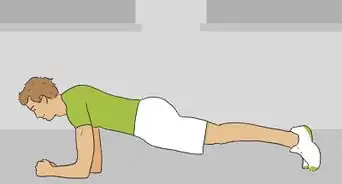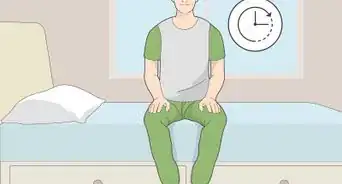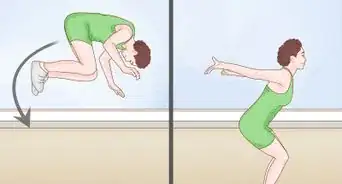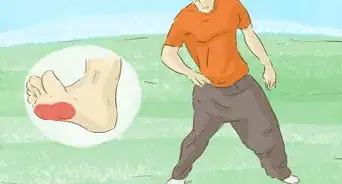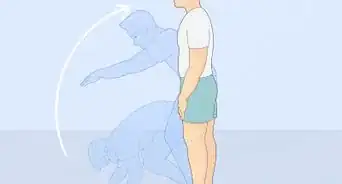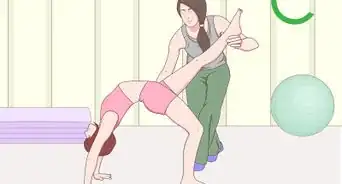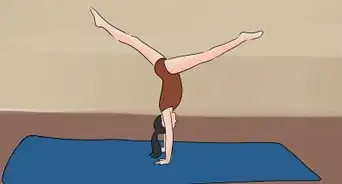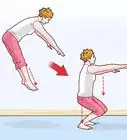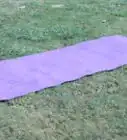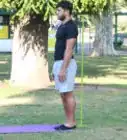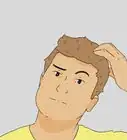This article was co-authored by wikiHow Staff. Our trained team of editors and researchers validate articles for accuracy and comprehensiveness. wikiHow's Content Management Team carefully monitors the work from our editorial staff to ensure that each article is backed by trusted research and meets our high quality standards.
This article has been viewed 16,093 times.
Learn more...
The helicopter cartwheel is a graceful, fluid movement that twists your torso to make your arms and legs look like they’re spinning. It looks challenging and certainly takes some time to practice and master, and it’s a great skill to add to your gymnastics or dance repertoire. As always, make sure to stretch beforehand to prevent injuries, and always work on new moves with a spotter.
Steps
Completing a Helicopter Cartwheel
-
1Start executing a regular cartwheel but stop in a straddled-handstand. Instead of completing the cartwheel by bringing your legs back down on the opposite side from where you started, pause in the middle while holding a handstand. Once you’re doing the helicopter cartwheel fluidly, you won’t pause anymore, but at the beginning it can help you keep the movements organized.[1]
- A straddled-handstand is simply a handstand where your legs aren’t extended straight up. Kind of think of it like you’re straddling a horse, only upside-down.
- The “leading leg” is the leg that leaves the ground first to start your cartwheel. For this move, it’s also the leg that will touch the ground last at the end, which is a bit different from your traditional cartwheel.
- The back leg is the second leg to leave the ground, and in this case, it’s the one that will land on the ground first.
- So if your left leg leaves the ground first when you start your cartwheel, you’ll use that leg to do the helicopter movement, land on your right leg first, and then bring your left leg down last.
-
2Swoop your leading leg down and around without letting it touch the ground. Imagine that you’re kicking a soccer ball with your leading leg and following through. Twist your body as you swing your leg so that your hips are facing upward toward the sky.[2]
- If this step feels uncomfortable, practice doing this first: stop the cartwheel while you’re in the handstand position; bend your leading leg at the waist so that your knee is coming toward your chest, and land that leg on the ground. Once you’ve done this several times, you’ll continue that downward motion with your leading leg but you’ll carry the momentum through instead of letting your foot touch the ground.
Advertisement -
3Plant your back leg down on the ground while thrusting your hips forward. As you bring your leading leg down and around, push your hips forward to help your body gain more momentum for the landing. Bring your leading leg down and plant your foot firmly on the ground.[3]
- Try to remember to arch your back during this part. Doing so will help your hips move further forward and will enable you to finish the move and stand back up.
-
4Release your hands from the ground and come back to standing. Let the momentum of the movement propel your body back up. Your back hand will stay on the ground the longest, while the leading hand that touched the ground first will come back up as you get your footing.[4]
- As you practice and get better at this particular trick, all the movements will blend so you look like you’re making a single graceful helicopter motion with your entire body.
Practicing and Building Your Skills
-
1Stretch your wrists and hamstrings before cartwheeling to prevent injuries. Plan on spending 5-10 minutes warming up before each cartwheeling session. Your gymnastics coach may give you some specific exercises to do, but if not, here are a few simple ones you can try:[5]
- Gently bend your wrists back and forth and hold each stretch for about 5 seconds. Repeat 3 times on each wrist.
- Stretch your hamstrings by sitting on the ground in a V shape, then stretch forward toward one foot and grasp the bottom of your shoe with both hands. Hold the stretch for about 15 seconds and repeat 3-4 times on each side.
-
2Keep your body limber by regularly doing dynamic stretches. The helicopter cartwheel involves your hip flexors and requires a lot of flexibility. While all dynamic stretching can be helpful in gymnastics, give this particular one a try to target those hip flexors:[6]
- Stand with your legs slighter wider than hip-width apart, and bend over slightly so your shoulders are in front of your knees. Keep your elbows bent and carefully jog backward about 10 paces. Pump your shoulders as you jog. Repeat this 5-6 times.
-
3Become a cartwheel master to create a strong base for the helicopter cartwheel. Until you’re proficient at a regular cartwheel, you shouldn’t try to do more advanced moves. Keep practicing until you feel confident in your abilities.[7]
- It’s normal to feel a little scared of falling when just learning how to do a cartwheel. Practice somewhere with a little give, like the lawn or on a gymnastics mat, so that there will be some padding just in case you do fall.
-
4Practice holding a handstand to get used to the feeling. Handstands help increase your upper body strength, plus they’ll get you used to the feeling of being upside-down. The helicopter cartwheel requires a lot of focus on what’s happening with your torso and legs, so removing any worry about your arms and the handstand portion of the move will be super beneficial.[8]
- It’s possible you’ve been doing cartwheels for a while but have never done a handstand. Try practicing doing several handstands in a row and holding them for a few seconds at a time each day to get better at them.
Warnings
- Never do a move that makes you feel uncomfortable. If you feel any pain, stop immediately.[11]⧼thumbs_response⧽
References
- ↑ https://youtu.be/tRqUh_Mdc60?t=16
- ↑ https://www.cbc.ca/player/play/1563703875925
- ↑ https://www.cbc.ca/player/play/1563703875925
- ↑ https://youtu.be/VKi6iecE1io?t=130
- ↑ https://kidshealth.org/en/teens/safety-gymnastics.html
- ↑ https://kidshealth.org/en/teens/stretching-vd.html
- ↑ https://youtu.be/VKi6iecE1io?t=46
- ↑ https://www.cbc.ca/player/play/1563703875925
- ↑ https://kidshealth.org/en/teens/safety-gymnastics.html
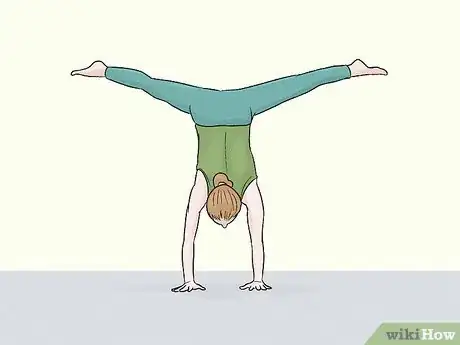
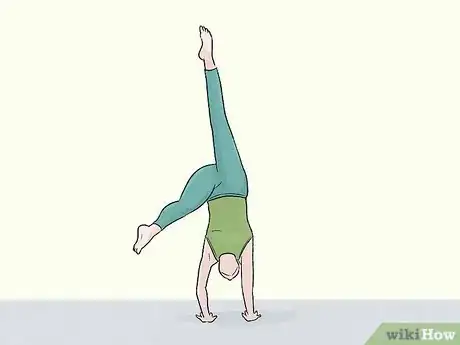
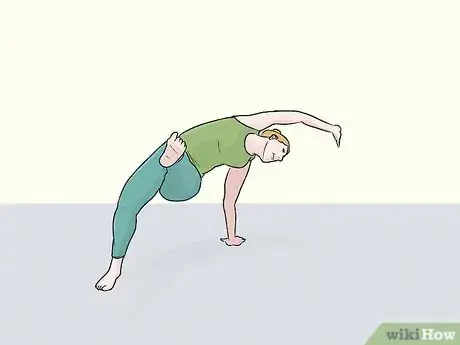
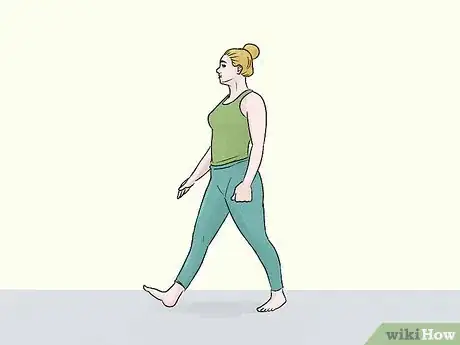
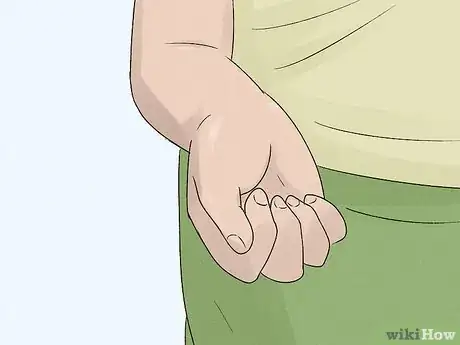
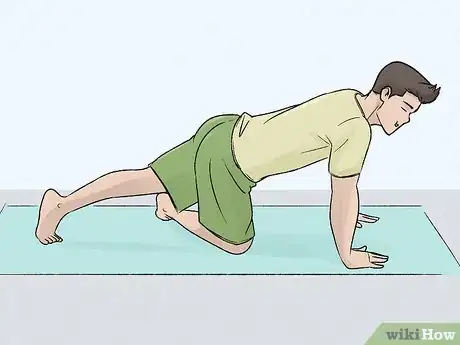
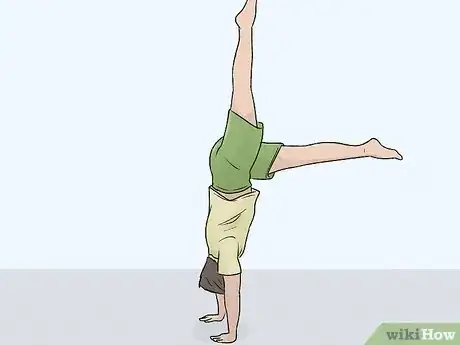
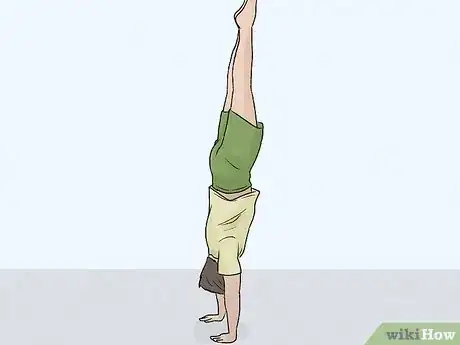
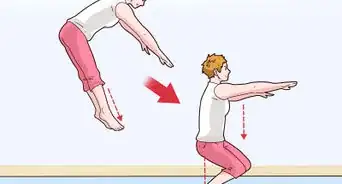
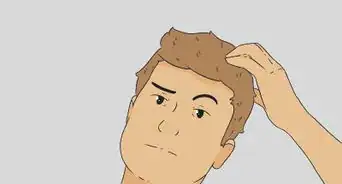
-Step-14-Version-2.webp)
